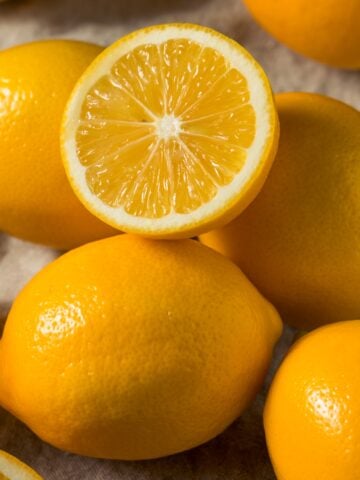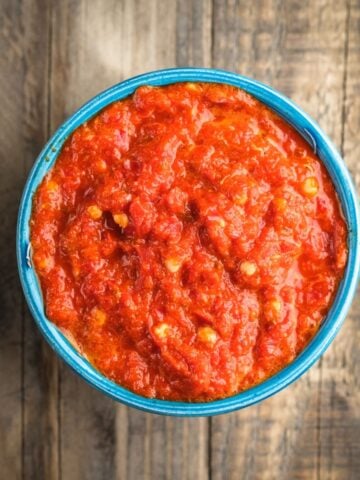What do you do when a recipe calls for oat flour, but you don't have any in your pantry? This handy guide will help you pick a suitable oat flour substitute to bake tasty gluten-free treats.

What is Oat Flour?
Oat flour is simply flour made from whole oats. It can be made by grinding oats into a fine powder or purchased pre-made. It has a pleasant, mild oat flavor and can add great texture and nuttiness to baked goods. It also provides more fiber and protein than all-purpose flour.
Many recipes rely on oat flour's binding qualities to hold muffins, cookies, quick breads, and cakes together. It helps make their texture dense and moist. This ingredient also works well in pancake and waffle batters.
Overall, this flour is a versatile and healthy ingredient. But finding it can be a hassle, especially for those on a gluten-free diet. Check out these easy substitutes below.
5 Reasons to Substitute Oat Flour
Here are some common reasons you may need an oat flour substitute:
- Allergies: Oats contain gluten, so if you're baking for someone with celiac disease or a gluten allergy, you'll need a substitute.
- Availability: This ingredient can be more challenging to find in stores than other gluten-free flour.
- Cost: Pre-made flour is often more expensive than buying and making your own.
- Recipe Specifics: A recipe may depend on oat flour's exact properties, making substitutions tricky.
- Preferences: You or your family may prefer almond flour or something else.
The 12 Best Oat Flour Substitutes
If you can't find this ingredient in your kitchen cupboard, the following are viable alternatives:
1. Almond Flour

Why it works: With a similarly dense and grainy texture, almond flour mimics the mouthfeel of oat flour well. It also adds moisture and richness from the almond oil.
Example dishes: Cookies, muffins, quick breads
Measurement: Substitute 1:1.
2. Coconut Flour

Why it works: This flour absorbs much moisture like oat flour does. It provides a nice coconut flavor.
Example dishes: Pancakes, muffins, bars
Measurement: Use ¼ cup of coconut for every 1 cup oat flour.
3. Brown Rice Flour

Why it works: This neutral-flavored flour has an oat flour-like effect on texture and density.
Example dishes: Pancakes, bread, muffins
Measurement: Substitute 1 cup of brown rice flour for 1 cup of oat flour.
4. Homemade Oat Flour

Why it works: Grinding steel cut oats or rolled oats in a blender or food processor creates an oat flour duplicate. Store in an airtight container.
Example dishes: Any recipe requiring this flour
Measurement: Use homemade oat flour exactly like the store-bought oat flour.
5. Barley Flour

Why it works: Barley flour has the same nutty, earthy quality. Barley flour works well in yeast bread recipes.
Example dishes: Quick breads, pancakes, muffins
Measurement: Substitute 1 cup of barley flour for 1 cup of oat flour.
6. White Rice Flour

Why it works: This gluten-free flour provides a similar structure without overpowering flavor.
Example dishes: Cookies, bars, bread
Would you like to save this?
Measurement: Substitute 1:1. Start with ¾ cup, then add more as needed.
7. Whole Wheat Flour

Why it works: The nutrient profile of whole wheat flour closely matches this flour.
Example dishes: Pancakes, muffins, breads
Measurement: Substitute 1:1.
8. Chickpea Flour

Why it works: Chickpea flour gives great binding power. It works well in sturdier baked goods.
Example dishes: Cookies, breads, pancakes
Measurement: Use ¾ cup chickpea for every 1 cup oat flour.
9. Amaranth Flour

Why it works: With a mild flavor, amaranth flour won't compete with other ingredients.
Example dishes: Pancakes, muffins, quick breads
Measurement: Substitute 1:1.
10. Quinoa Flour

Why it works: Gluten-free quinoa flour offers a similar density and nutrition as oat.
Example dishes: Cookies, breads, bars
Measurement: Substitute 1:1.
11. Soy Flour

Why it works: Soy flour boosts similar protein levels.
Example dishes: Cookies, muffins, breads
Measurement: Use a 1:1 ration when substituting with soy flour.
12. Rye Flour

Why it works: Rye flour mimics oat flour's dense texture and earthy flavor. It provides structure in baked goods.
Example dishes: Pancakes, cookies, muffins
Measurement: Substitute 1:1.
Common Uses for Oat Flour
This flour is used in a variety of baked goods and dishes. Here are some of the most common ways it's used, along with the best substitutes:
- Pancakes - This flour gives pancake batter great thickness and density. The oats soak up moisture, preventing soggy pancakes. Other oat flour substitutes: Almond flour or brown rice flour mimics the texture of oat flour best in pancakes.
- Healthy cookies - The hearty texture of oat flour is perfect for chewy cookies like oatmeal cookies. Substitute for oat flour: Try replacing this flour with almond or chickpea flour for a similar effect.
- Muffins - Oat flour provides the dense, cakey quality that muffin fans love. Substitute for oat flour: Coconut or almond flour to get a comparable muffin crumb.
- Quick Bread - Banana bread and other quick bread turn out moist and rich thanks to oat flour. Substitute for oat flour: barley flour, wheat flour
- Granola Bars - The subtle oat taste and chew of oat flour boosts homemade granola bars. Best oat flour substitute: Almond flour adds similar nuttiness and binding power.
- Meatballs and Meatloaf - Oat flour helps bind juicy turkey or beef meatballs without drying them out. Best oat flour substitute: Try brown rice flour and barley flour for a comparable moist texture.
- Waffles - Oat flour gives excellent crispness to the outside of waffles but keeps the interior light and fluffy. Substitute oat flour with brown rice flour, which mimics this effect nicely.
- Fruit Pies - This ingredient thickens pie fillings perfectly, so they aren't runny but aren't too stiff. Substitute oat flour with white rice flour.
- Crackers - The hardy qualities of oat flour lend well to gluten-free crackers, giving them crispness without crumbling. Replacing oat flour: Quinoa flour
- Batters - This flour provides excellent coating ability for dishes like chicken tenders or mac and cheese bites. Oat flour substitute: Almond flour
Helpful Tips for Oat Flour Substitutes
Follow these tips to get the best results when substituting for this ingredient:
- Check labels to ensure flours are certified gluten-free if required.
- Grind old-fashioned oats into a fine powder with a food processor to make your own oat flour in a pinch.
- Adjust other wet and dry ingredients to account for moisture differences in flours.
- Add a touch of xanthan gum when using coconut flour to improve binding.
- Start by substituting 1:1, then tweak the amount as needed.
Can I use all-purpose flour instead of oat flour?
No, all-purpose flour contains gluten, so it is unsuitable as a substitute for those following a gluten-free diet. Instead, stick to naturally gluten-free options like almond, coconut, or rice flour.
Are oat flour and almond flour interchangeable?
In most recipes, oat and almond flours can be swapped 1:1 with similar results in terms of texture and flavor. Nut flour adds a bit more sweetness and moisture than oats.
Can I replace oat flour with coconut flour?
Yes, you can use coconut flour as a substitute, but not at a ratio of 1:1. Use about ¼ cup coconut flour for every 1 cup oat flour called for, and increase liquids slightly. The coconut flavor will come through as well.
What flour can I substitute for oat flour?
Some suitable oat flour substitutes include almond flour, coconut flour, brown rice flour, chickpea flour, quinoa flour, amaranth flour, and homemade oat flour made by blending rolled oats into a fine powder.
Can I bake with oatmeal instead of flour?
Yes, you can make your own oat flour by blending steel-cut or old-fashioned oats in a food processor or blender until it becomes a fine powder. Use this oat flour substitute 1:1 in recipes calling for oat flour.
How much almond flour can replace oat flour?
You can generally use a 1:1 ratio. The almond flour may change the flavor profile slightly but will mimic the texture well.
Can I use wheat flour instead of oat flour?
If you don't require a gluten-free substitute, then whole wheat flour can often be swapped 1:1 for this flour. But wheat flour contains gluten, so avoid it if baking for those with celiac disease or a gluten allergy.
Photo Credits: DepositPhotos.com





Make my day! - Share your thoughts...